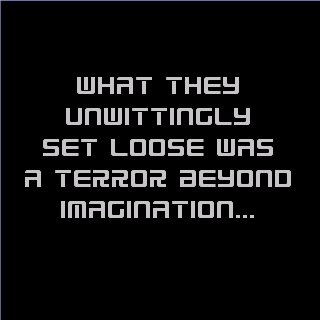

Early action games for consoles and computers typically featured an arcade-style lives system, giving players a limited number of chances to complete the game. Too many mistakes meant restarting from the beginning. To compensate for an arcade player's ability to keep putting coins in the machine, many games incorporated a second safety net underneath lives, allowing players to continue once all their lives are gone (generally with some form of limitation or penalty).
There was a lot of experimentation with these ideas. Some games allowed you earn an abundance of extra lives via skillful play or hidden secrets, while in others lives were a scarcity. Some games gave players a fixed number of continues, some had unlimited continues, and some required players to earn continues. On top of lives and continues, there were games with health bars: losing health led to losing lives led to losing continues, with harsher penalties at each step.
The ubiquity of these multi-tiered failure states affected the way people designed games. With all these safety nets, it was reasonable to ask players to learn and put on an elegant performance. Games could demand you keep up a consistent level of skillful play for long periods of time, and accept your fate if you make too many mistakes. I think I am too old and tired to put on such performances anymore, but this was a beautiful and important era.
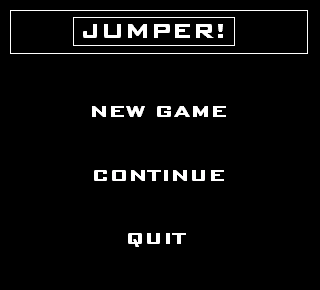
Jumper's innovation was to throw all of this in the garbage. There's no health, lives or continues - one hit from anything sends you back to the start of the current level. To compensate, the levels are very short, but generally also very difficult. A level might only be 10-20 seconds long, but take tens or even hundreds of attempts. To minimize frustration, your character respawns very quickly after death.
"That's exactly like every hard indie platformer released in the last ten years", you say. But Jumper came out in 2004! It predates I Wanna Be The Guy (2007), Meat Boy (2008), and VVVVVV (2010). It might even be the genesis of this modern style of platformer. (If you know of an earlier example, please tell me!) Jumper feels a little bit like playing old games using an infinite lives cheat or emulator savestates, but I can't think of a pre-Jumper game where small-scale, high-precision, infinite-retry platforming is the primary, legitimate form of play.
Jumper starts with a silly sci-fi story cutscene. In 1888, scientists were attempting to create the ultimate soldier...


The scientists abandoned the lab during World War I, leaving Ogmo unfinished. In 2004, Ogmo suddenly wakes, and must escape the lab...
Let's go!
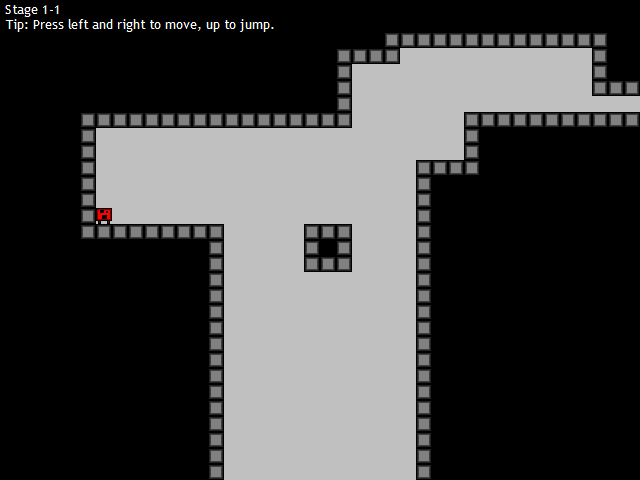
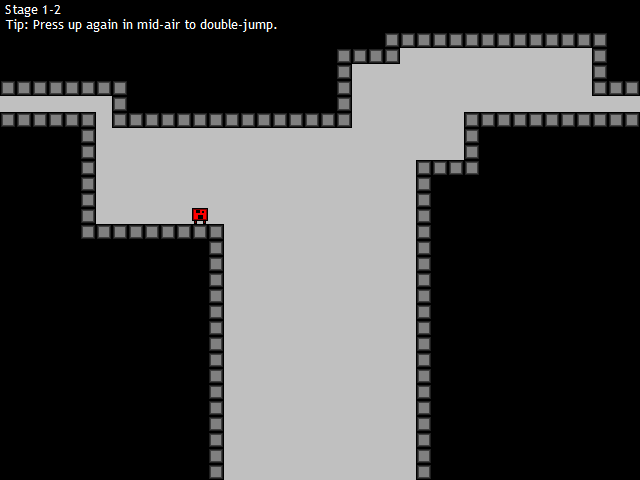
The latest and greatest hotness in game design is teaching the player the mechanics through play in a seamless and elegant manner. Everyone loves this and writes blog posts and makes long videos about it. Anyways, Jumper isn't about that so it just has a seven stage long tutorial world.
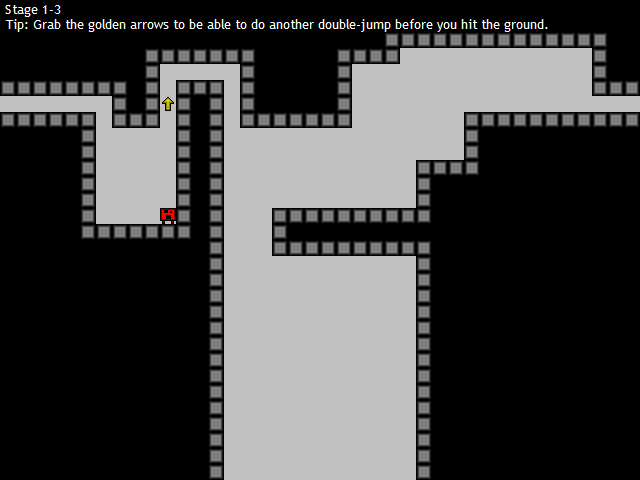
Aside from maybe inventing the modern platformer, Jumper's other great innovation is the Golden Arrow. These are used heavily in the game's most interesting and unique platforming setpieces.
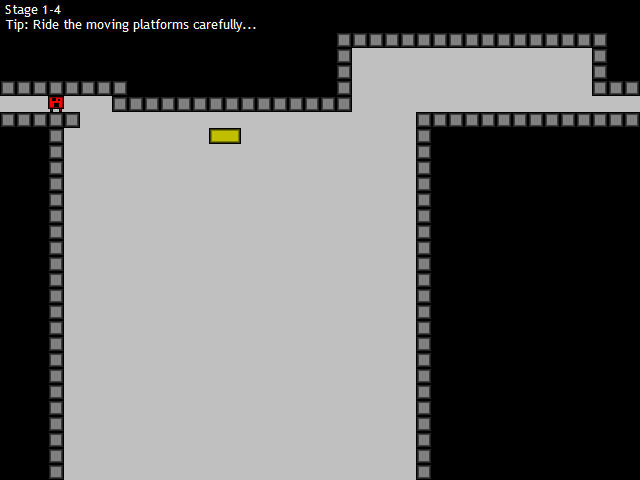
These yellow platforms bounce left and right and they're horrible. Ogmo's movement gets kind of glitchy and unpredictable around them. The physics in this game are a bit janky in general - it feels like there's a brief stop in your movement whenever you land on the ground, and squeezing into one-tile gaps can be inconsistent.
Ogmo moves very fast and accelerates and decelerates instantly, which some people dislike, but I think the precision of his movement feels good. Also, Ogmo's jump is fixed-height rather than variable-height, so height control is all about timing your mid-air jumps correctly.
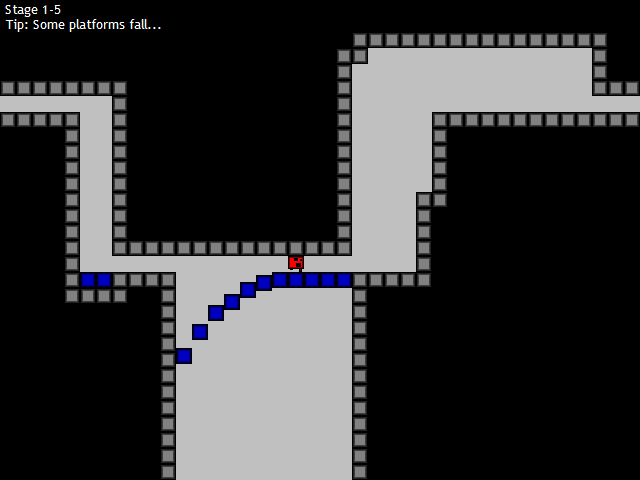
Falling blocks don't "carry" you down with them as you fall, so you have to jump off them very quickly, or else the game will think you're in mid-air and use up your double jump. This makes some later sections annoying.

Ogmo's jump animation is just him spinning around.
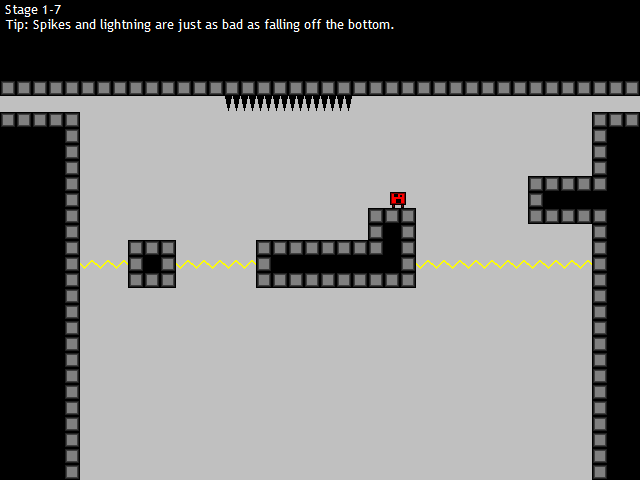
In the final screen of the tutorial, we see the first actual hazards (other than falling off the bottom of the screen). On to the next sector...
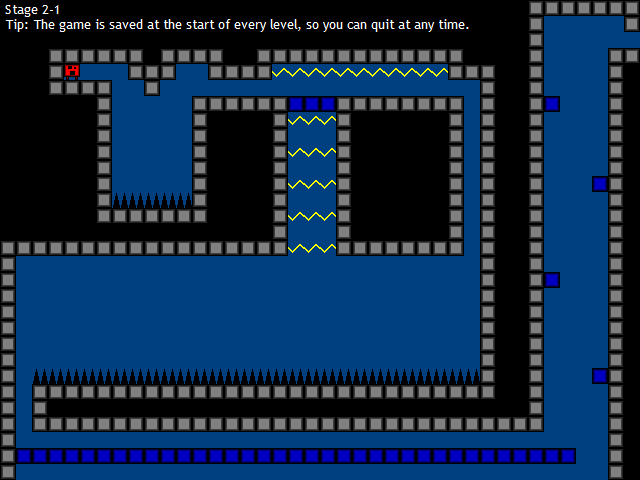
Here's the first actual level. Nothing too hard yet, but climbing up the falling blocks at the end can be annoying.
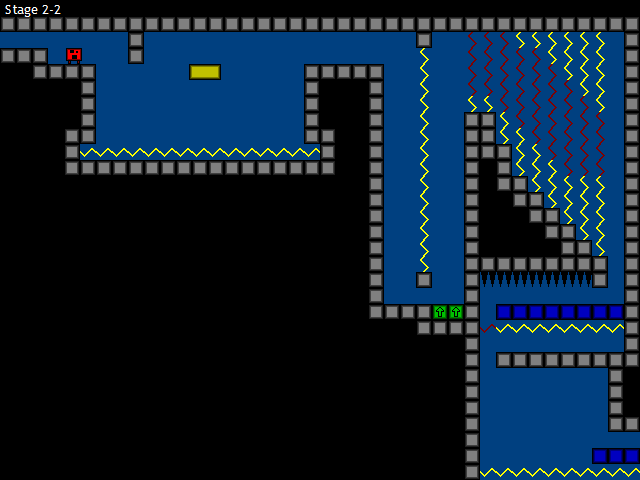
Even with the bad moving platform physics, the first jump isn't much trouble. The hardest part is getting through the electricity on the top-right. You can pass through red electricity.
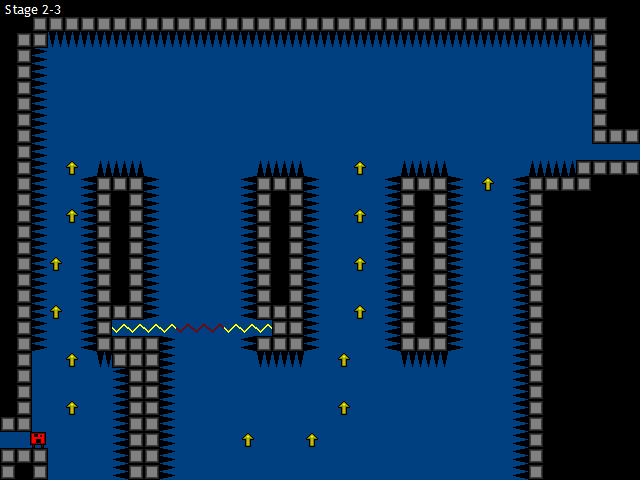
Here's the first real use of the golden arrows. It looks like you need to fall down and climb back up, but if you space out your jumps right, you can actually skip over that part! Whether it was intentional or not, I like that this screen has a little shortcut for advanced players.

This one is annoying, but it's so short and simple that you'll probably get past it fairly quickly.
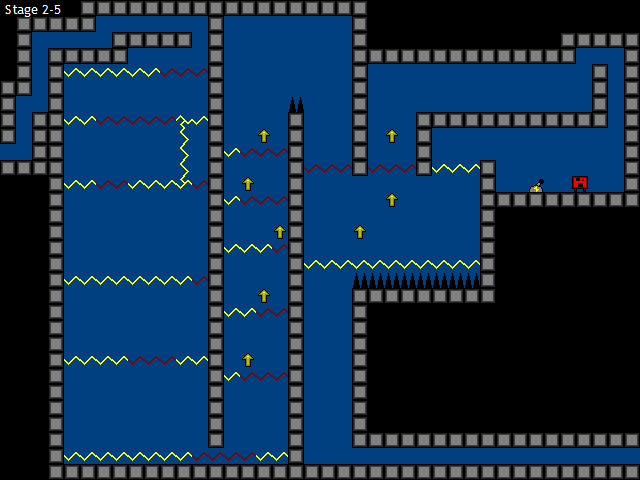
This level is quite a difficulty jump, and probably the first place where new players will get stuck. The fall and climb at the beginning require much more precise control over Ogmo's movement than any of the previous levels, and there are a lot more opportunities to screw up and die. The switch at the end turns off the electricity so you can proceed to the exit.
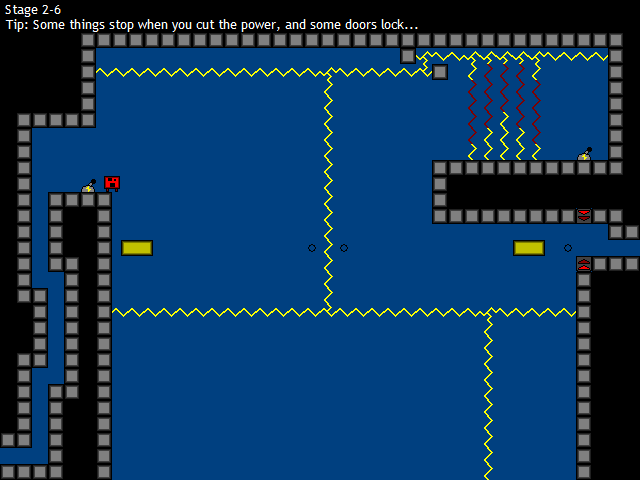
After that, we end the sector with a fairly easy level that teaches us more about switches.
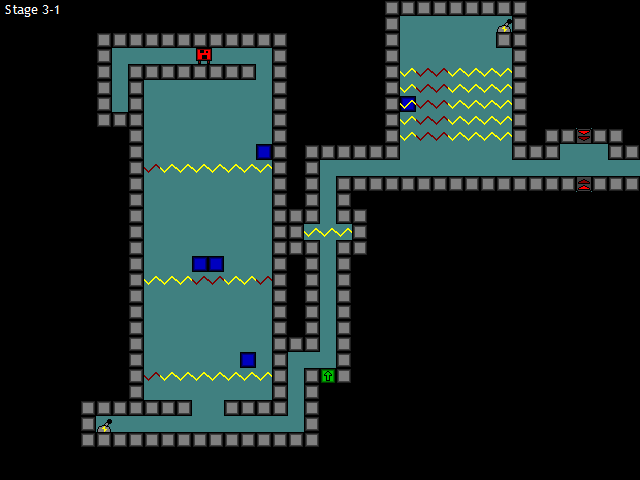
Sector 3 is probably where most people give up on the game. The first level is pretty innocuous, but it has a cute little trap - if you land on the two blue blocks in the middle, they'll fall and stop you from progressing.
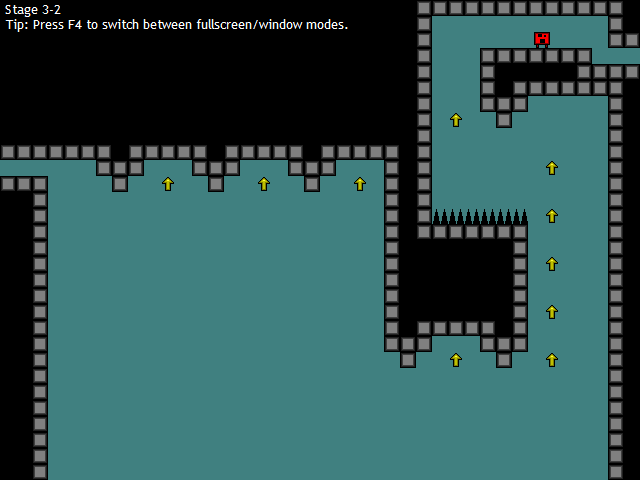
This level is deceptively difficult, and probably one of the most clever uses of golden arrows in the game. If you just mash the jump button for the climb at the end, you'll probably fall short of the final platform. You have to space out your jumps correctly to maximize your height.
Also, remember to press F4 to switch between fullscreen/window modes.
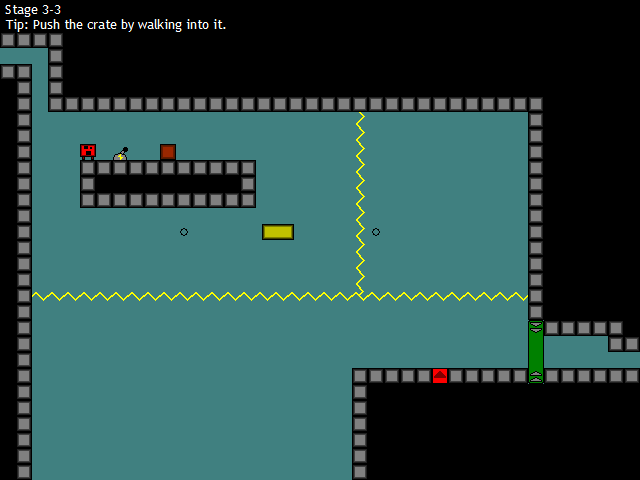
This weird, super-easy puzzle level introduces crates and pressure switches. Can you figure out the puzzle? It's probably meant as a little breather before...
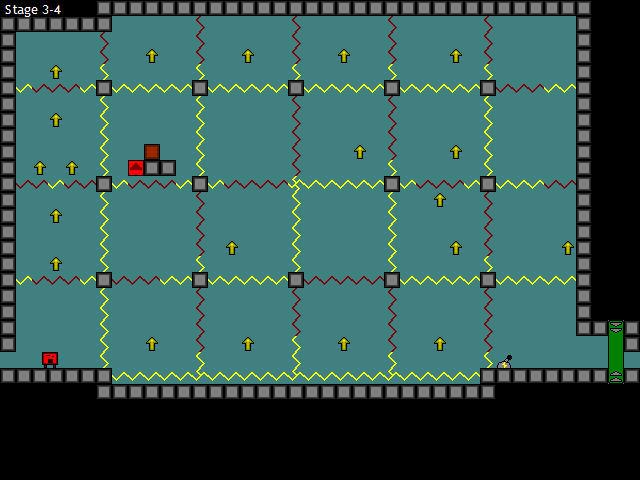
Stage 3-4 is probably the most iconic and notorious level in the game. Aside from being rather long, I think what makes it so difficult is the level of control you need to have over Ogmo. For example, in the horizontal sections at the top and bottom, it's not enough to just hold right and time your jumps - you need to start and stop to collect each arrow, while also making sure you jump early enough to avoid landing in the electricity. It takes a lot of practice to get it into muscle memory.
I think this level also exemplifies the kind of design that Jumper was allowed to pull off by moving away from lives and continues. It's extremely precise and technical and it feels exhilarating to execute perfectly. I think my first completion took over 100 deaths. It would be a nightmare in a game where losing 5 lives sends you back to the start of the world.
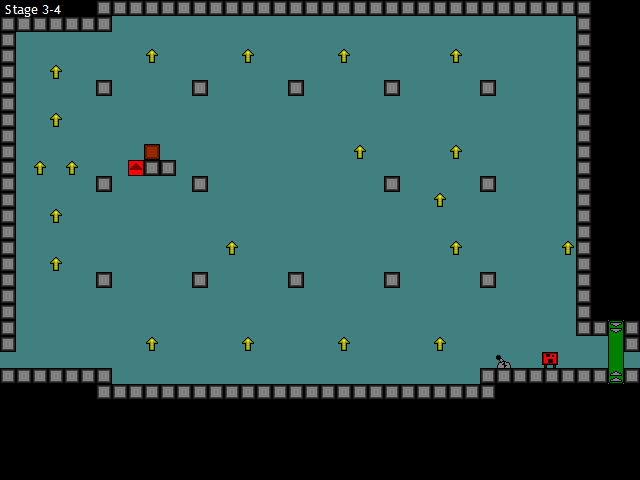
At the end, there's this silly little section where you have to turn off the electricity and backtrack to the pressure switch. There's no danger whatsoever of dying. I wonder what kind of feelings the designer wanted to evoke here?
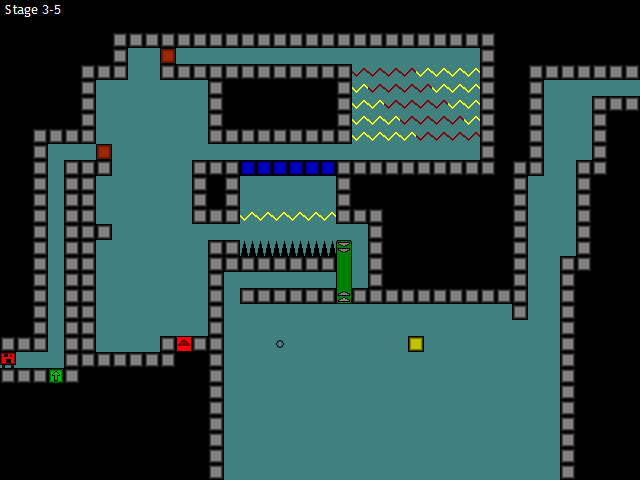
The rest of Sector 3 isn't that bad. The electricity jump here is annoying because Ogmo doesn't like to squeeze into one-tile gaps sometimes.
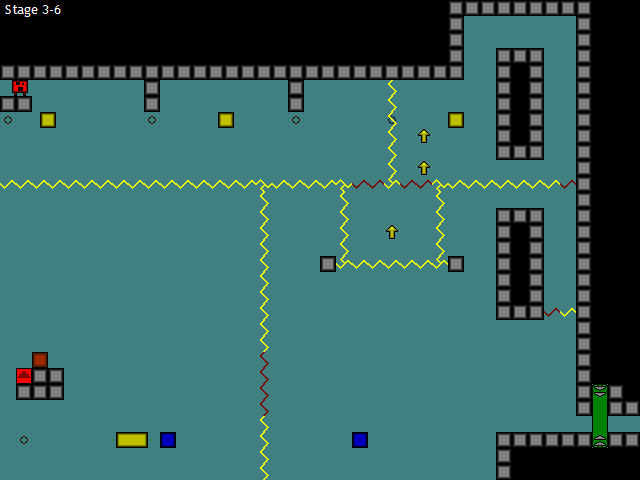
Finally, we have some more annoying moving platform jumps, but this is no big deal after 3-4.
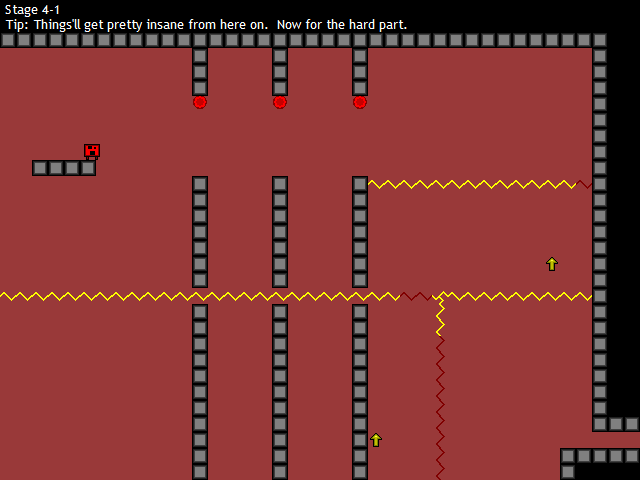
Now for the hard part! This particular level isn't that bad, though. The red circles are fireballs that bounce up and down. Just time yourself past those and do a few jumps to the end.
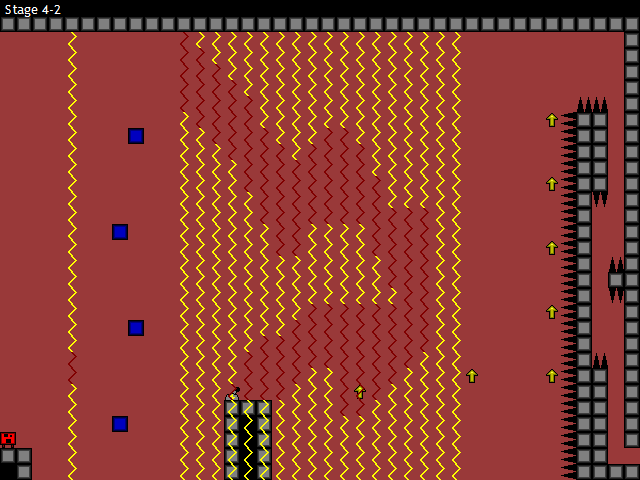
Making your way through that giant electricity blob is fairly precise and tough, and then there's a tight squeeze at the end. It's not as bad as 3-4, but probably one of the harder levels so far.
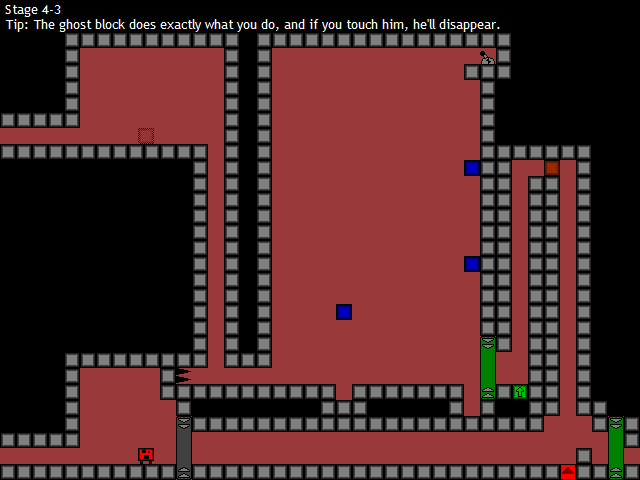
This is a funny little level featuring the Ghost Block, a mechanic that's only used in one other stage. You have to use the ghost to turn on the electricity, which creates a tricky drop for the ghost (that I forgot to take a screenshot of) and allows Ogmo to progress. Then Ogmo and the ghost block have to work together to open the green door at the end!
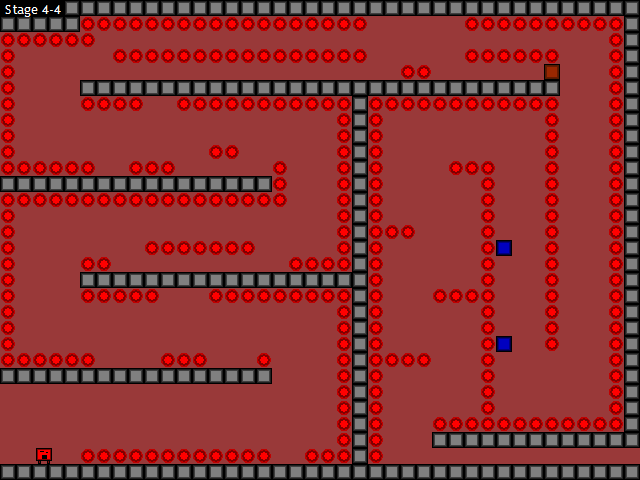
This is a tough one, and the next place you're likely to get stuck if you beat 3-4. It's a long sequence of precise jumps, but interestingly, there's no golden arrows - you can take a break after each jump to plan your next move. The zigzag drop at the end is tricky, and it's painful to die there.
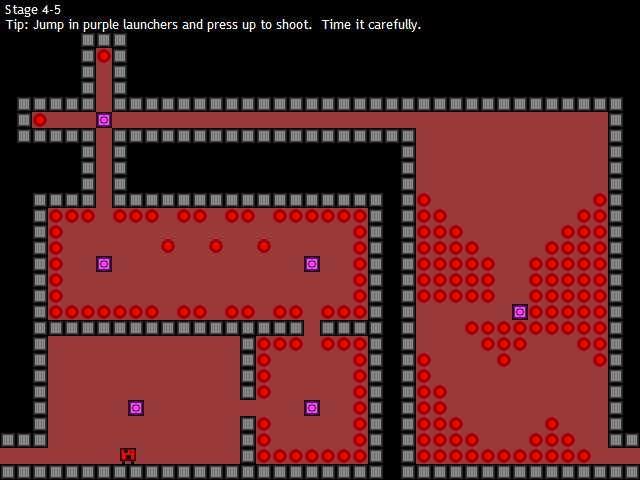
As with Sector 3, we end with some relatively easy levels. I never noticed until writing this article, but it seems like most of the sectors reach a climax somewhere in the middle, and then give you a break for a bit.
The launchers are kind of like the barrels in the Donkey Kong Country games - they rotate (pointing in the four cardinal directions) and you have to shoot out of them at the right time. The timing is pretty lenient, so this level isn't very hard.
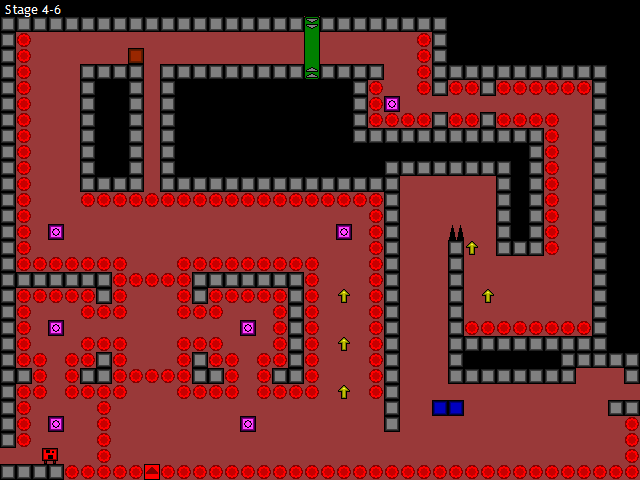
More launchers, and a totally pointless block pushing bit! It never really registered with me until now how utterly useless that block and switch are, because it doesn't take up a lot of time to push it or anything. I think I want to put really pointless puzzles in my games now...
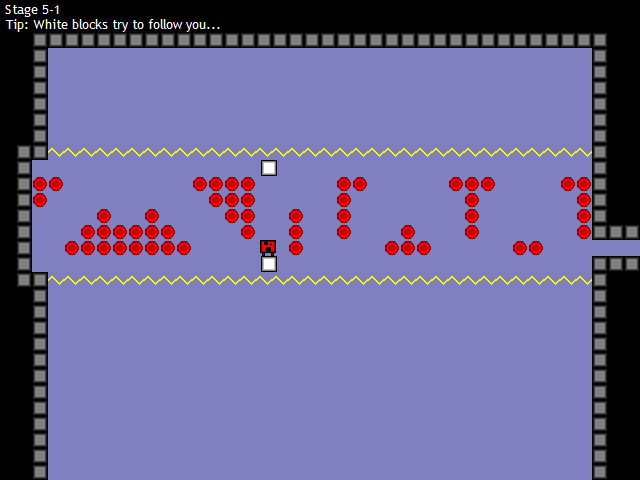
Speaking of pointless things, Sector 5 opens by introducing follower blocks. They appear in exactly two levels, and in this one they basically serve the same function as a regular floor and ceiling. Jumper did come with a level editor though, allowing fans to use follower blocks to their full potential.
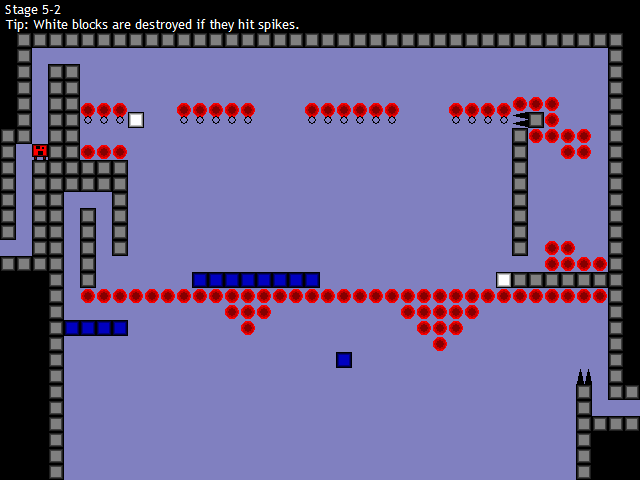
Here we find out white blocks get destroyed when they touch spikes, but this doesn't really amount to anything because the white block at the top is basically a glorified floor. The second white block is at least a little interesting because it gets stopped by the falling blue blocks, forcing you to drop the blue blocks and then double back.
I'm generally a fan of games having lots of weird little mechanics that maybe only appear in one or two levels, as opposed to the approach where each mechanic is fully explored and milked as much as possible. Even so, there's something about the way Jumper casually discards the ghost block and follower blocks after hardly touching them that disturbs me...
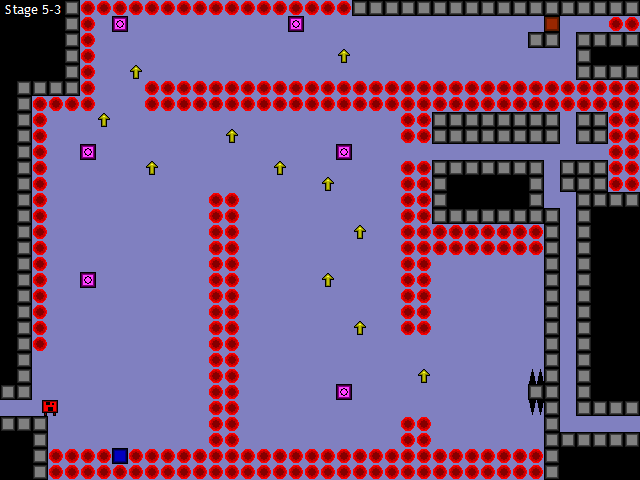
This level has an interesting structure. You start by following the chain of shooters over to the right side...
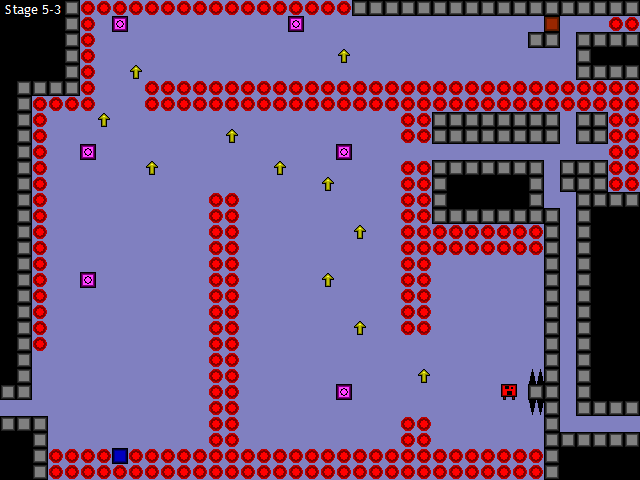
Then you follow the golden arrows to the shooter at the top...
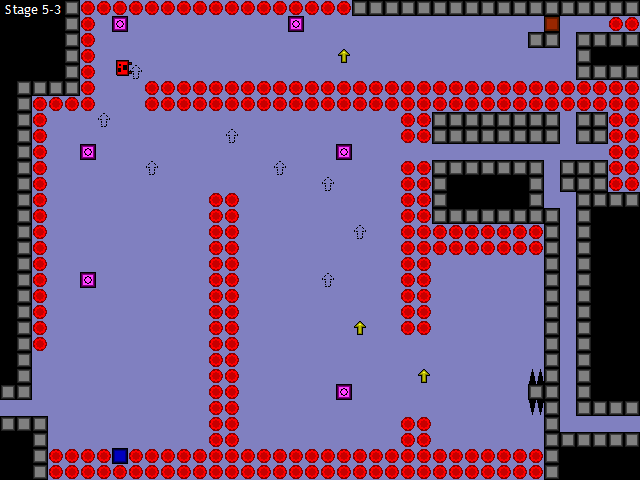
Shoot to the right and push the block down...
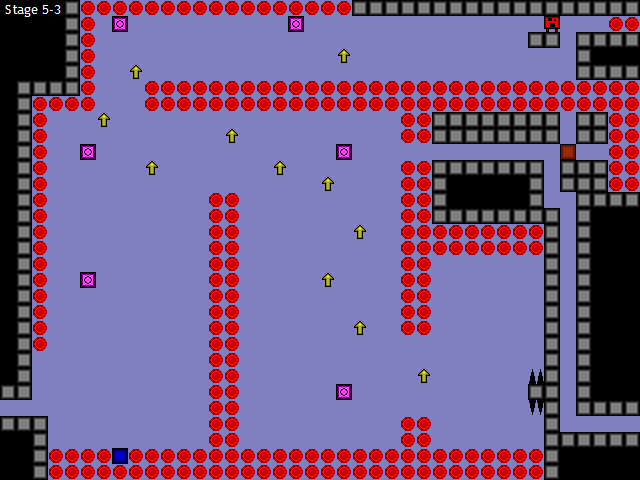
Shoot back to the left and down to the blue block...
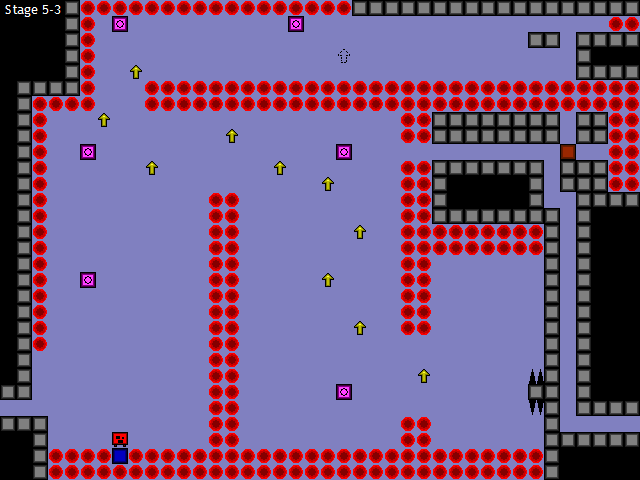
Then jump back up to the shooters, and shoot to the right to reach the exit!
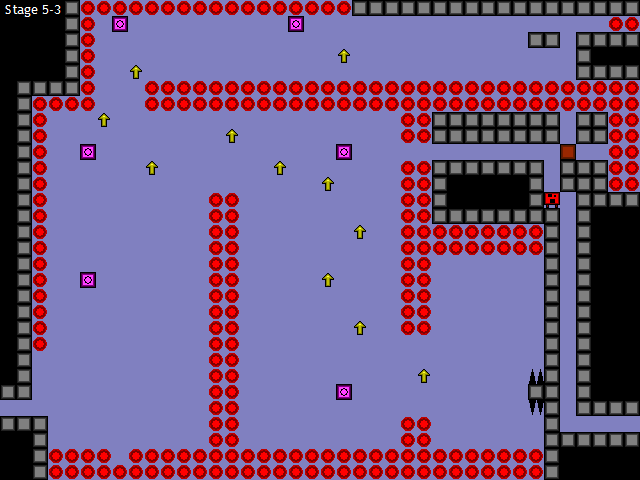
Wow! On to 5-4...
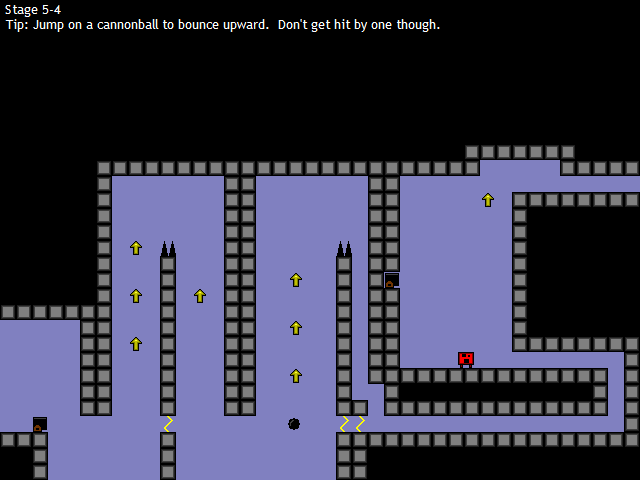
Maybe it's because I've played this game a lot, but I don't think anything in Sector 5 is that difficult compared to the hardest levels of Sectors 3 and 4. This might be the trickiest level in Sector 5 because it relies a lot on timing, a skill that the game hasn't tested very much up to this point.
You have to bounce on a cannonball from the left cannon twice, and the second bounce is kind of tricky to get. After that you're pretty much home free though, unless you run into a shot from the last cannon.
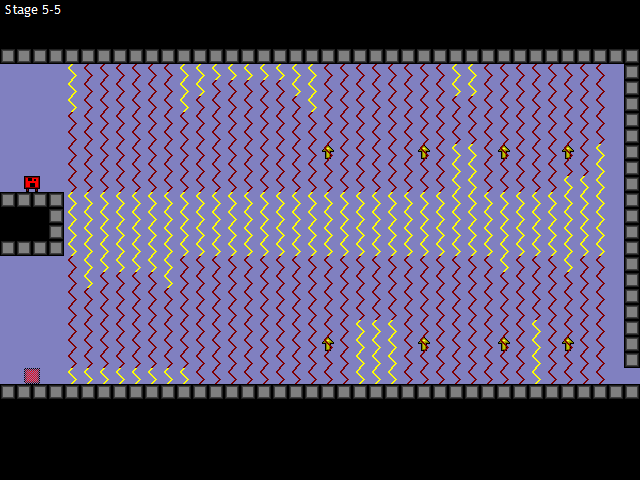
This is a cute level, and the second and final appearance of the ghost block. It's basically two levels that you have to navigate simultaneously, one as the ghost and one as Ogmo.
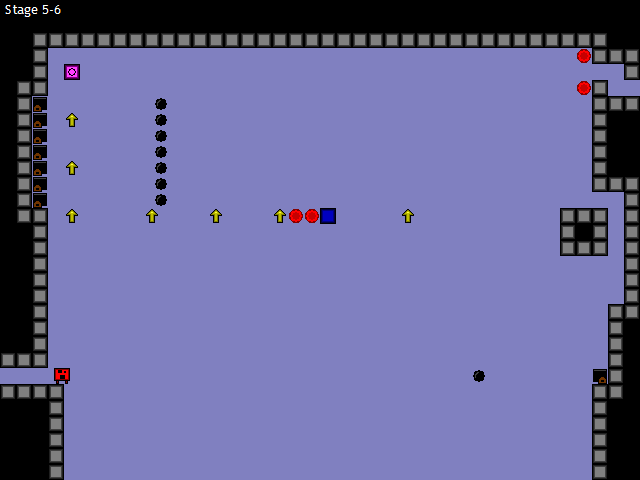
Sector 5 ends with this not that hard level. Bounce across some cannonballs on the bottom, then go under the cannonballs at the top.
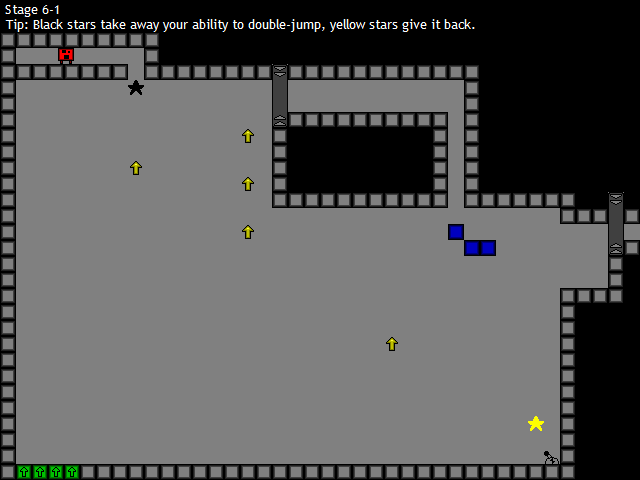
Sector 6 opens with this innocuous-looking room. Flip the power switch at the bottom and...
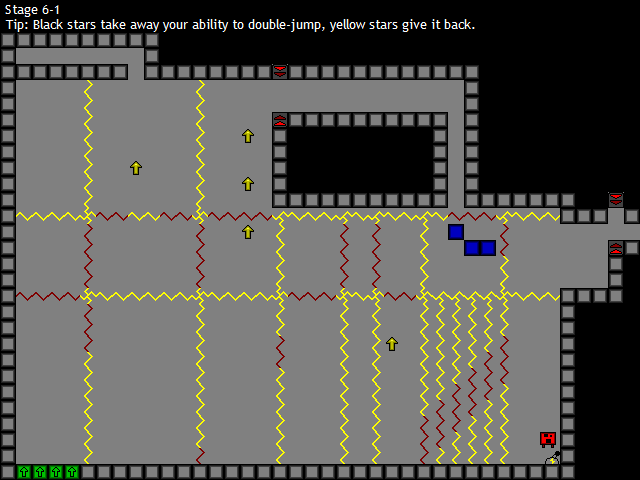
This is one of the harder levels in the game, but if you've made it past 3-4 and 4-4, you can probably do it. Also, it's funny how the yellow and black stars are totally superfluous in this level.
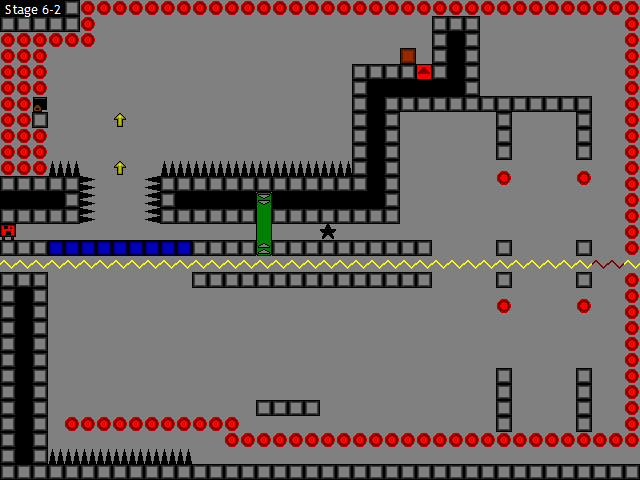
This is a pretty neat level. You have to jump over and push the crate onto the switch, while leaving enough of the blue block bridge so you can land back on it afterwards. Then we have a repeat of the bouncing fireballs from 4-1, but this time you don't have your double jump.
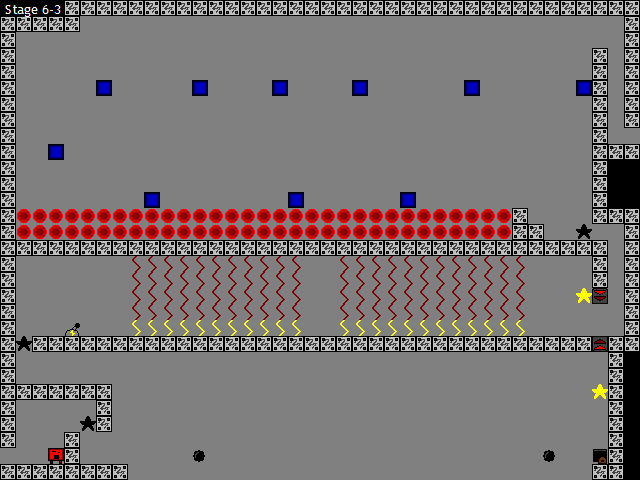
The electricity section in this level wastes your time a bit - you have to turn off the power, get the star, go back and turn it on, then double jump past the electricity. Ogmo moves pretty fast though, so it probably won't be that annoying unless you die on the falling block part a lot.
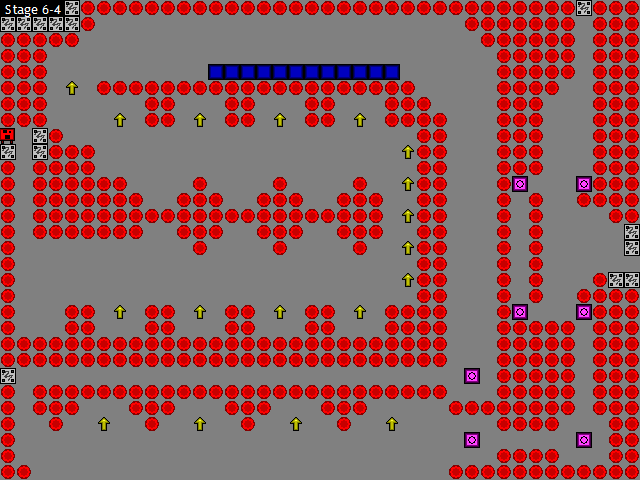
Another very challenging jump gauntlet. But again, people who make it this far can probably handle it... eventually.
This is one of five levels from the original Jumper to reappear in Jumper 2. The others are 2-5, 3-4, 4-4, and 6-1. I think 3-4 also made an appearance in Jumper 3.
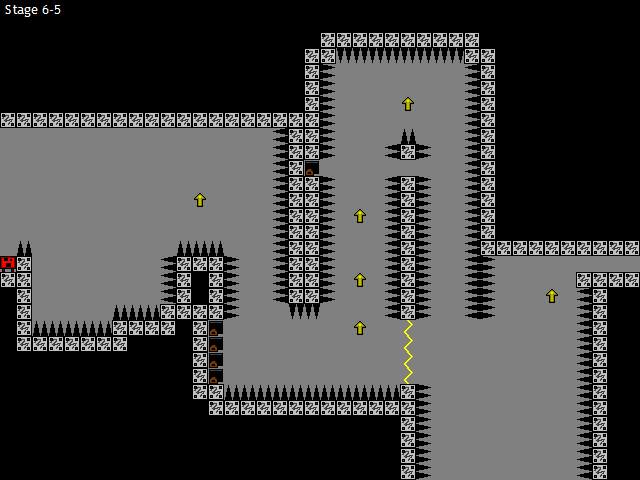
Another cannonball bouncing level. I think this one is actually a bit easier than 5-4. It looks like you need to time a bounce at the end, but you can just double jump to reach the golden arrow. So you only really need to time one cannonball bounce in the middie.
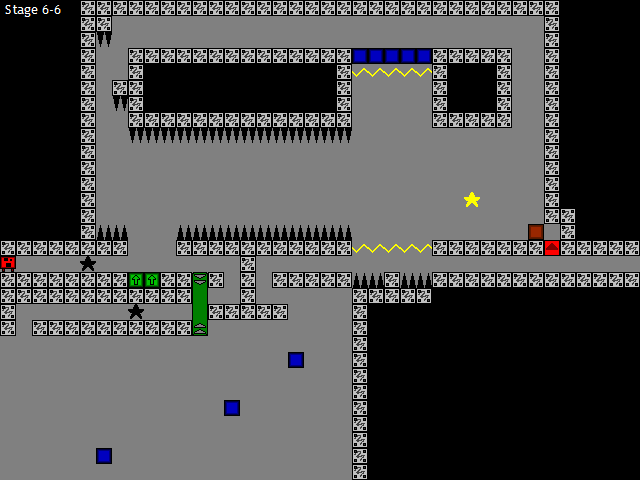
The final level of Sector 6 isn't that tough, but there's a little trap...
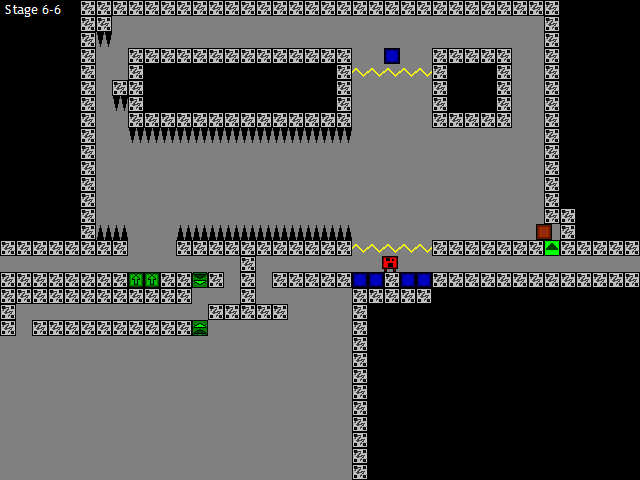
Don't drop that middle blue block or you'll be unable to progress here!
When you exit Sector 6, a cutscene plays:
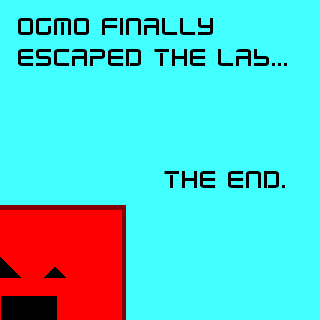
Yay!
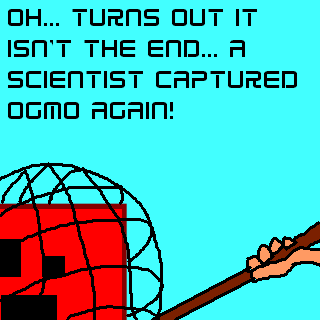

I love that a game as difficult as this has a fakeout ending. I already knew about Sector 7 by the time I got to this part of the game, though. I wonder if I would have been fooled otherwise?
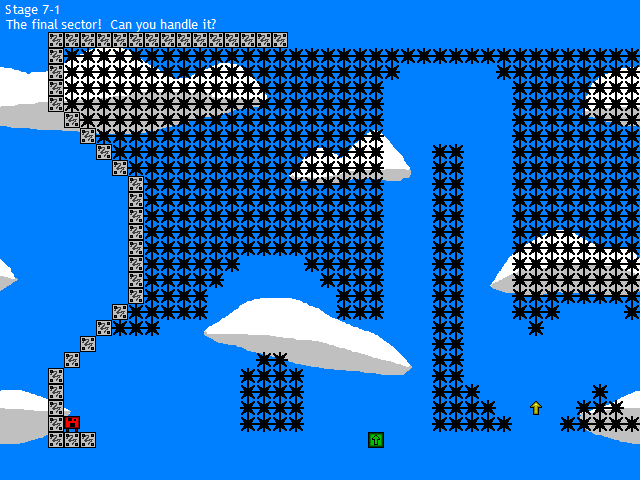
Sector 7 introduces scrolling levels! 7-1 has a couple of precise jumps.
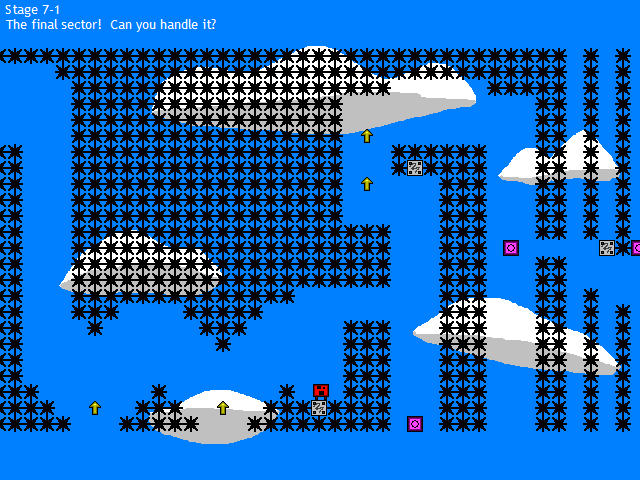

Let's move on to 7-2.
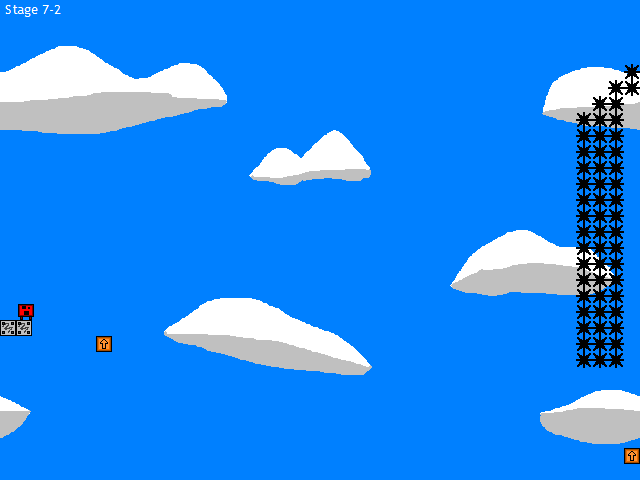
This level introduces orange Super Jump Pads, which get destroyed when you bounce on them.
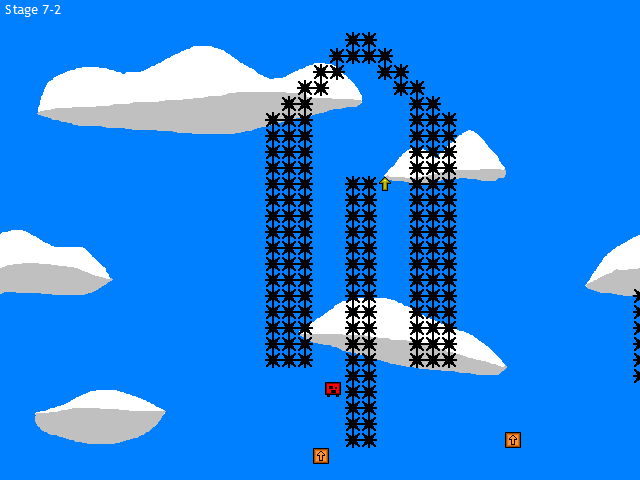
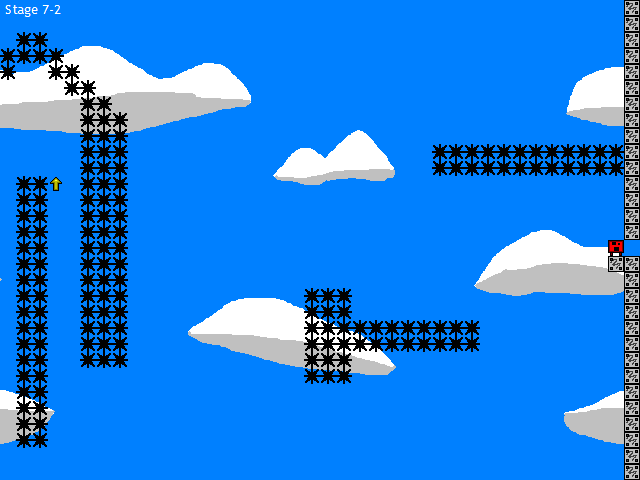
It's probably the easiest level since Sector 1. Followed immediately by...
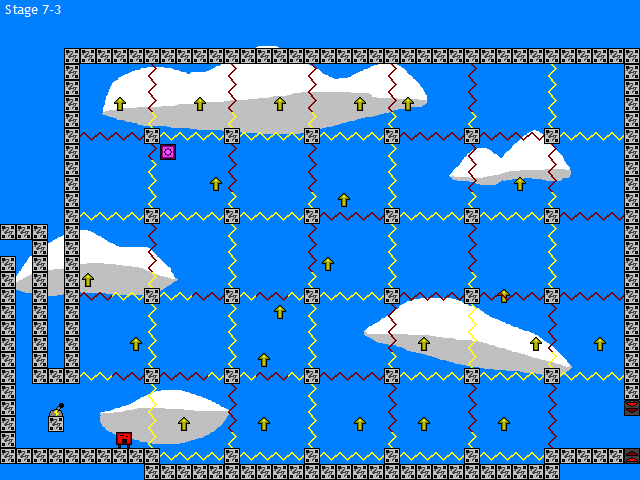
For me, I think this was the hardest level in the game! It's basically 3-4 but longer and with more precise jumps. But I remember one of my friends having a relatively easy time with it. It probably depends on how much your skills develop over the course of the game. Either way, if you make it this far, you probably have the strength to push through! Do your best...
Also, check out that useless power switch! I never realized how many weird useless items there were in this game and I love it.
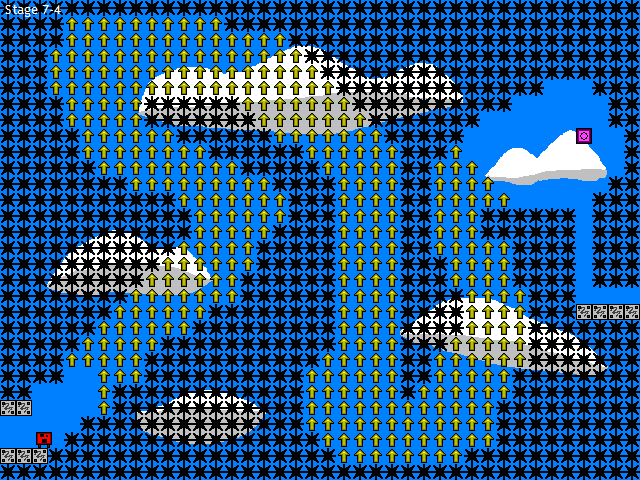
This level is so silly and cute! It feels like the kind of thing I would make if I was almost finished making a game and I was totally out of ideas. I wonder if that's what prompted this...
Also, it's the penultimate stage!! Time for the final boss!!
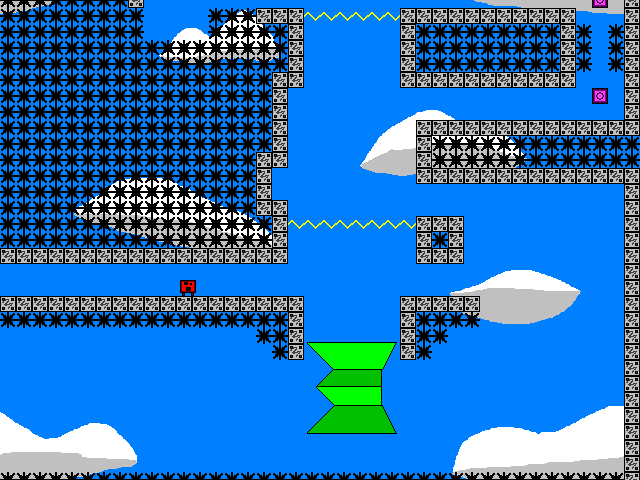
This is a vertical scrolling stage where you have to keep up with this green ship thing. Touching the ship kills you. It's probably not the hardest stage in the game, but I think it's the longest, and it has some tricky jumps.
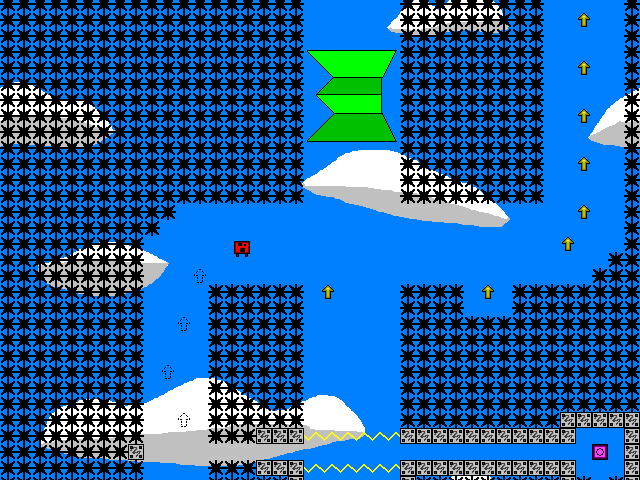

The sequence above is kind of tough - if you delay your jump too long to line up with the gap, the scrolling will catch up with you.
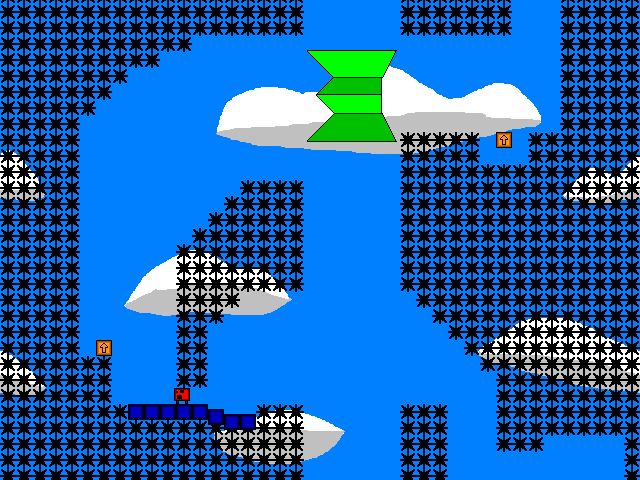
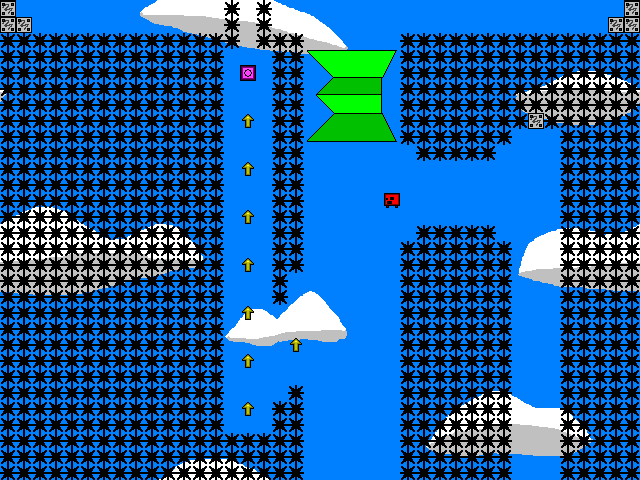
Some climbing, then a shooter section.
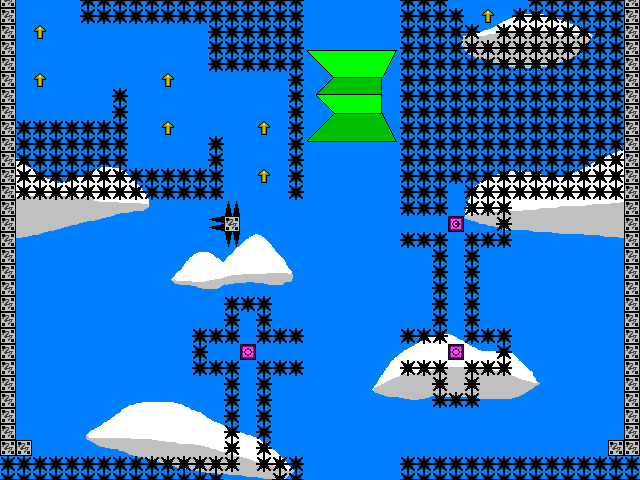
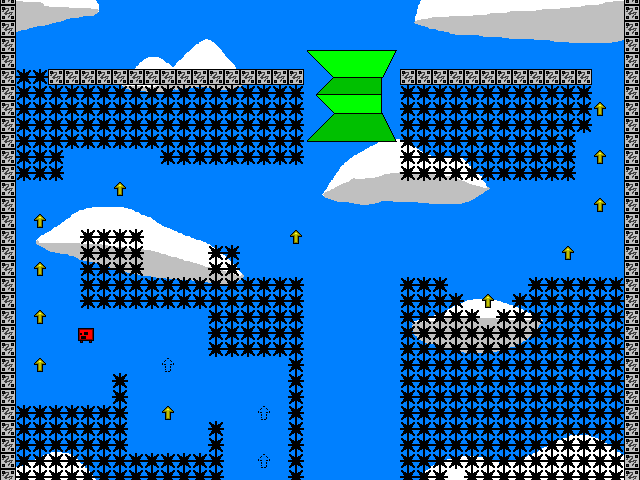
When you reach the top, the ship explodes?
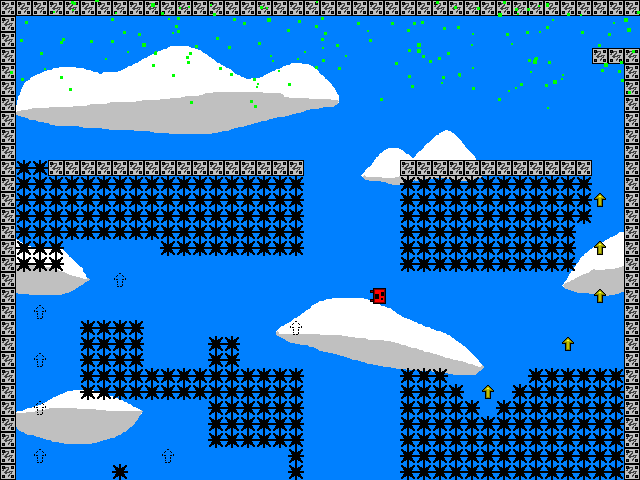
That one arrow right above the spikes is a huge pain. Exit from the top-right and...
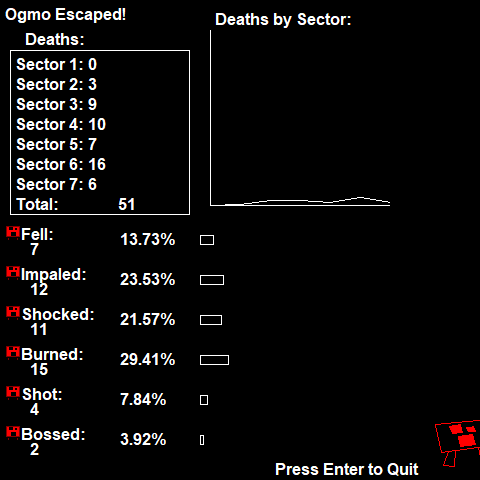
That's Jumper! You get a nice little graph of your deaths at the end, which will probably be more mountainous than this one if it's your first playthrough. I think my first playthrough had over 800 deaths...
As modern Jumper-like platformers have grown in popularity, it's become increasingly common to deride games with lives and continues. Their demands for consistency and mastery are a waste of the player's time. It doesn't help that modern implementations of these systems are often vestigial and worthless. Retro re-releases are praised for their savestate and rewind features, letting anyone turn old games into their own personal Jumpers. We understand now that action games which aren't Jumpers should not exist. We have reached a new, enlightened time.
Jumper is one of my favourite video games, and it has had an immeasurable influence on my work. Yet just as I grew tired of the stressful performances that classic arcade-style games demand, I have lately been growing tired of the repetition inherent in Jumper-like games. If arcade games are performances, Jumper is a series of (unusually exciting) practice drills. What's left to do when both performance and practice have become too exhausting?
-- Sylvie (@sylviefluff)